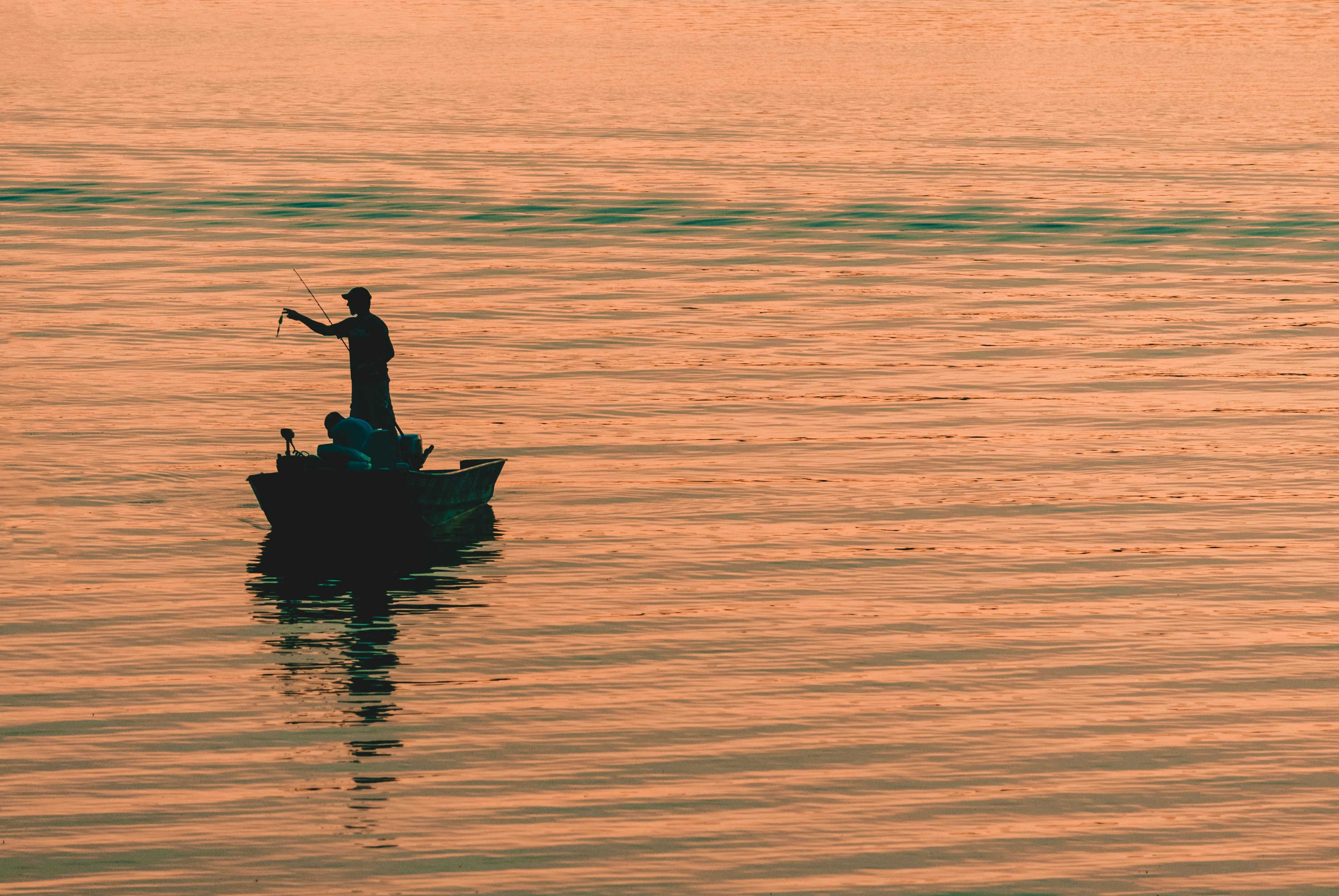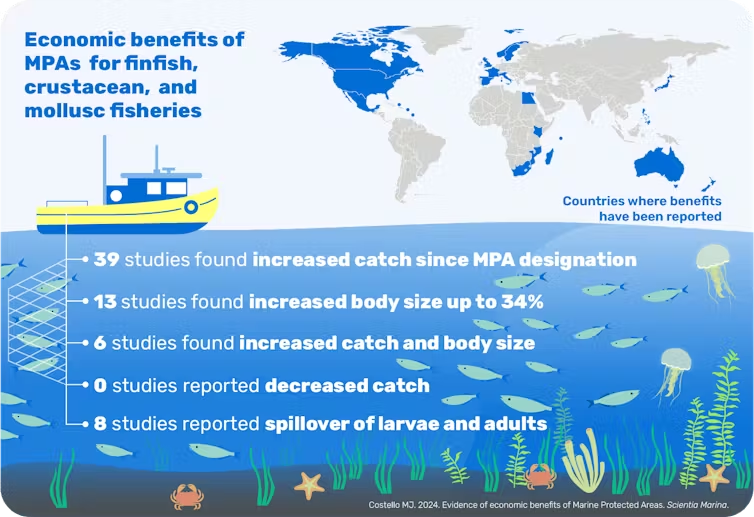
Fisheries management systems in Canada employ a range of management tools – such as gear regulations, fishing quotas and area closures – to help sustain fish stocks that millions of people depend on for food and jobs.
Yet less than a third of Canada’s wild fisheries are considered healthy, and almost 80% of critically depleted fish stocks lack a plan to rebuild them, according to Oceana Canada’s most recent annual Fishery Audit. Additionally, the Office of the Auditor General of Canada found that Fisheries and Oceans Canada (DFO) – the federal department responsible for overseeing fisheries management nationwide – remains unable to collect “dependable and timely catch data”, which is needed to monitor fish stocks and inform sound decisions like setting catch limits to keep fish numbers at healthy levels.
Without better management, numerous species are at risk of being exploited and depleted.
Marine protected areas (MPAs) offer a different, and complementary, approach to ocean protection. Their proven ability to achieve both conservation and fisheries objectives is recognized around the world, though confusion and misinformation about MPAs and their relation to fisheries management persists. This Q&A aims to clear some confusion on this matter, providing a strong case for establishing MPAs to bolster the productivity and sustainability of fisheries in Canada.
What is the role of MPAs?
MPAs can generally be described as ocean spaces where human activities are more strictly managed than in surrounding waters. MPAs can be established for various purposes, but two of the main reasons are for nature conservation and fisheries management. In terms of fisheries management, MPAs can work to rebuild exploited populations, protect critical fish habitats and specific life stages, enhance the abundance and quality of targeted catch, and deliver a range of other benefits for fisheries.
Are MPAs just another fisheries management tool?
MPAs are an approach to ocean protection that differs from conventional fisheries management in a few ways.
- MPAs employ an area-based and ecosystem-based approach to protect a wide range of biodiversity. MPAs work to maintain and improve the health of entire ecosystems, recognizing the important connections between habitats and the animals that live there. In contrast, fisheries management tools tend to focus on one target species and activity at a time.
- MPAs provide permanent and long-term protection. Fisheries management tools are often seasonal or have a specific end date.
- MPAs can protect marine biodiversity from multiple harmful activities and cumulative impacts. Fisheries management tools only deal with seafood resources and the regulation of fishing activities. They do not, for example, restrict ocean dumping in highly productive fishing grounds – but MPAs can do that.
How can MPAs benefit fisheries?
Establishing MPAs can provide multiple long-term benefits for fisheries, contributing to the sustainability of fisheries in the long term. By reducing certain human activities and threats within their boundaries, well-managed MPAs provide a refuge for fish to grow larger, live longer and produce more offspring. These benefits can spill over into neighboring waters as the eggs and adults of more abundant fish move to areas where fisheries can reap the rewards.
A recent wide-scale scientific review of 81 publications about MPAs provides dozens of examples of economic benefits to fisheries, including increased fish stocks, catch volumes, and larger fish and lobsters. The study looked at research from 25 countries (including Canada) and a range of climates and habitats!

Source: MJ Costello, News and comments: Evidence of economic benefits from marine protected areas, Scientia Marina 88 (1), March 2024, online.
What are the potential costs of MPAs to fisheries?
Not all MPAs restrict fishing, but some do limit or restrict fishing activities for conservation or fisheries management purposes. Establishing MPAs can come at some costs to fishers (for example, shifts in fishing activities to new areas, or more crowded areas).
While risks to fisheries warrant special consideration and possible mitigation actions (like buy back programs that purchase licences from fishers), MPAs are integral to the economic sustainability of fisheries. A growing body of research shows that the long-term benefits of MPAs can significantly outweigh initial costs to impacted fisheries. For instance, a 2021 study in California found that a 35% reduction in fishing area following MPA designation was more than compensated for by a 225% increase in total catch of spiny lobster after a period of only six years. The transition period (of six years in that case) must be considered in the planning and management of the MPA.
Are MPAs needed in Canada given existing fisheries management systems?
There are several reasons for establishing MPAs in tandem with existing fisheries management systems. These reasons include:
- Even the best fisheries management tools cannot provide all the benefits of MPAs. MPAs can protect depleted fish stocks from multiple stressors (and in fact, new MPAs in Canada have minimum standards that prohibit oil and gas exploration and exploitation, mining, dumping and bottom trawling) and they have the ability to maintain or improve the health, productivity and resilience of entire ecosystems.
- MPAs act as an insurance policy for fisheries management. Standard stock assessments and resulting fisheries management measures are far from perfect (as made clear in the introduction to this blog) and always have a level of uncertainty. Establishing MPAs can limit the potentially dire consequences of management errors when they do occur, preventing irreversible stock collapse.
- MPAs and fisheries management are both integral components of a broader system of ocean protections. Along with other forms of management, MPAs and fisheries management tools are part of a toolkit needed to combat ocean threats and achieve sustainable and economically viable protections.
MPAs are not intended to replace conventional fisheries management systems, just as fisheries management tools are not meant to replace the functions of MPAs. Rather, these tools can be complementary instruments and will achieve the best results through proper planning and integration.
The challenges facing our ocean are complex, and so we must approach these challenges from multiple angles. MPAs and fisheries management are two key parts of the solution.
Photo: Kelly Sikkema via Unsplash